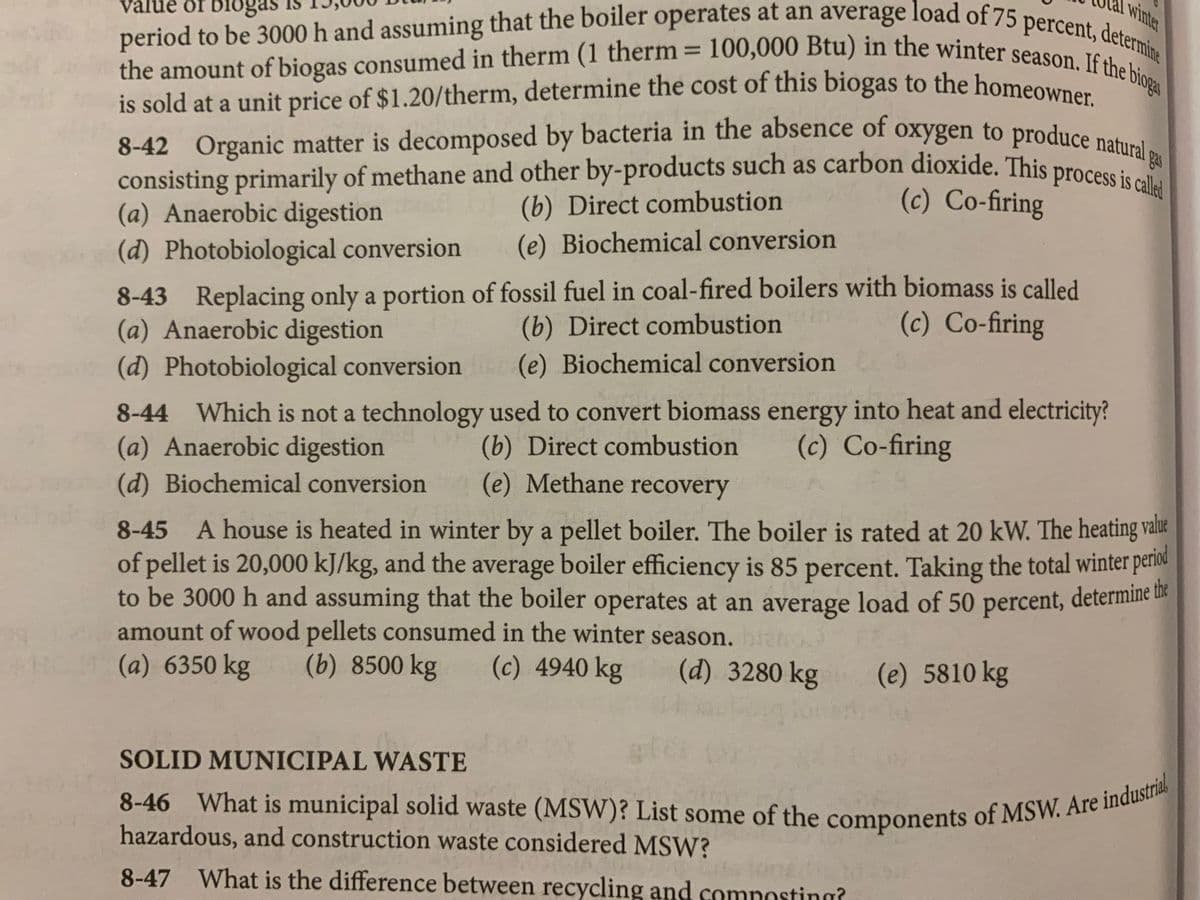8-44 Which is not a technology used to convert biomass energy into heat and electricity? (a) Anaerobic digestion (c) Co-firing (b) Direct combustion (e) Methane recovery (d) Biochemical conversion
Which is not a technology used to convert biomass energy into heat and electricity?

(a) Anaerobic digestion is a process that uses microorganisms to break down organic material in the absence of oxygen, producing biogas which can be used to generate heat and electricity.
(b) Direct combustion involves burning biomass in a boiler to produce steam, which is then used to generate electricity.
(c) Co-firing is the process of using biomass in combination with fossil fuels in power plants, in order to reduce greenhouse gas emissions and increase the proportion of renewable energy in the electricity mix.
(d) Biochemical conversion involves using enzymes or microorganisms to break down biomass into sugars, which can be converted into fuels or chemicals.
(e) Methane recovery is the process of capturing and using methane that is produced during the decomposition of organic matter in landfills, wastewater treatment plants, and other sources. The captured methane can be used to generate electricity or heat.
Trending now
This is a popular solution!
Step by step
Solved in 2 steps


